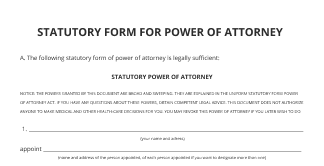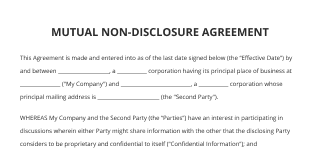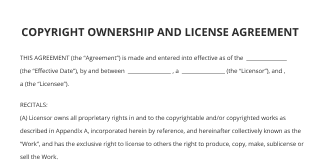Merge Initial with airSlate SignNow
Get the powerful eSignature capabilities you need from the solution you trust
Choose the pro service created for pros
Set up eSignature API with ease
Work better together
Merge initial, within a few minutes
Reduce your closing time
Keep important data safe
See airSlate SignNow eSignatures in action
airSlate SignNow solutions for better efficiency
Our user reviews speak for themselves






Why choose airSlate SignNow
-
Free 7-day trial. Choose the plan you need and try it risk-free.
-
Honest pricing for full-featured plans. airSlate SignNow offers subscription plans with no overages or hidden fees at renewal.
-
Enterprise-grade security. airSlate SignNow helps you comply with global security standards.

Your step-by-step guide — merge initial
Employing airSlate SignNow’s eSignature any organization can enhance signature workflows and eSign in real-time, providing a better experience to consumers and staff members. merge initial in a few simple steps. Our mobile apps make working on the run achievable, even while off-line! Sign contracts from any place worldwide and close tasks quicker.
How to fill out and sign a merge initial
- Log in to your airSlate SignNow profile.
- Find your document in your folders or upload a new one.
- Open the document and make edits using the Tools menu.
- Drop fillable boxes, add textual content and sign it.
- Include multiple signees by emails and set the signing sequence.
- Specify which individuals can get an completed doc.
- Use Advanced Options to reduce access to the document and set up an expiration date.
- Tap Save and Close when finished.
Moreover, there are more extended functions available to merge initial. List users to your common workspace, browse teams, and keep track of cooperation. Numerous users all over the US and Europe recognize that a solution that brings people together in one unified digital location, is what organizations need to keep workflows functioning effortlessly. The airSlate SignNow REST API enables you to integrate eSignatures into your application, website, CRM or cloud storage. Try out airSlate SignNow and get faster, smoother and overall more effective eSignature workflows!
How it works
airSlate SignNow features that users love
See exceptional results merge initial
Get legally-binding signatures now!
FAQs merge initial
-
How do you merge a first and last name in Excel?
1. = Concatenate(A2, " ",B2) Step 1: In a blank cell, such as C2, enter the formulas of =Concatenate(A2, " ",B2), see screenshot: 2. = A2&" "&B2. -
How do I switch last name to first name in Excel?
Add an empty column by right-clicking on the top of the column next to the existing column of names, then select Insert. Click the Data tab. Click on the top of the column with your contacts' names to highlight the whole column. Click Text to Columns. Select "Delimited" and click Next. -
How do I fill out my first name and last name?
Suggested clip English Vocabulary - First name? Given name? Forename? What's ...YouTubeStart of suggested clipEnd of suggested clip English Vocabulary - First name? Given name? Forename? What's ... -
How do I write my full name?
3 Answers. When a US form asks for "full name", it means the sequence of names as written on your birth certificate or other official documentation (such as passport). In your case, your first name (usually the name you are known by) is the "first name" and your remaining prénoms would be the "middle name(s)". -
How do you merge names?
Open your spreadsheet containing the list of names that you would like to combine. Click in a blank cell in a blank column. ... In your formula, you will replace A2 and B2 with the cells that contain the data that you want to combine. ... The data from the two cells should appear combined in this cell. -
How do I merge two columns?
Suggested clip 3 ways to merge columns in Excel into one - YouTubeYouTubeStart of suggested clipEnd of suggested clip 3 ways to merge columns in Excel into one - YouTube -
How do I merge two columns without losing data?
Suggested clip Merge cells in Excel without losing data - YouTubeYouTubeStart of suggested clipEnd of suggested clip Merge cells in Excel without losing data - YouTube -
How do I merge columns in Word?
Select the cells you want to merge (by pressing Shift and clicking). From the Table Tools Layout tab, in the Merge group, select Merge Cells . -
How do you merge cells in Word?
Select the cells you want to merge (by pressing Shift and clicking). From the Table Tools Layout tab, in the Merge group, select Merge Cells . -
What are the six steps of mail merge?
Step 1: Select the Document Type. ... Step 2: Start the Document. ... Step 3: Select Recipients. ... Step 4: Write Your Letter. -
How do I switch first name to last name in Excel?
Suggested clip Excel: Switch last name first to first name first - YouTubeYouTubeStart of suggested clipEnd of suggested clip Excel: Switch last name first to first name first - YouTube -
How do you combine names in Excel with commas?
You need to type =CONCATENATE first and then populate the other fields in the formula. Pay attention to the placement of the commas and parentheses. In your formula, you will replace A2 and B2 with the cells that contain the data that you want to combine. -
How do you concatenate in Excel with spaces?
Add double quotation marks with a space between them " ". For example: =CONCATENATE("Hello", " ", "World!"). Add a space after the Text argument. For example: =CONCATENATE("Hello ", "World!"). The string "Hello " has an extra space added. -
How do you concatenate in Excel?
To reverse concatenate formula in Excel, you can use a formula based on the TRIM function, the MID function, the SUBSTITUTE function, the REPT function, and the COLUMNS function. Type this formula into a blank cell and then press Enter key and then drag the Fill Handle down to other cells to apply this formula.
What active users are saying — merge initial
Related searches to merge initial
Merge zip field
There are two kinds of people on the road, those who see that the right lane is ahead and immediately move into the left lane, and those who keep driving along in the right lane until the last second. We'll call those folks late mergers. Though, if you're an early merger you probably have more colorful names for them. So, you might be surprised to know the late mergers have been right all along, and there is a scientifically sound reason why we should all start doing that. It's the two words that commuters dread, it's called the zipper merge. The late merge is also called the zipper merge. It's the most efficient way to funnel a high volume of cars from two lanes into one according to science. If the zipper merge is so great, how come you've either never heard of it, or you get the finger when you do try it. It's very hard sometimes. People just try to keep like they are really going to go but see you trap with back door they still will not let you win. A bunch of states and cities have tried to spread the word. North Carolina's Department of Transportation is trying to encourage drivers to work together and take turns merging. Take a look at this sign called a zipper merge. Here's how the Minnesota Department of Transportation illustrates zipper merging. This was just part of their publicity campaign for the zipper merge in 2011. They also had billboards and they registered the domain dothezippermerge.org. Kansas DoT joined in a few years later in 2014. Here's the Missouri DoT. The move works because it's a more efficient use of space. The cars are using all available lanes right until the choke point. There are tons of studies that show that if we all use the zipper merge, we'd improve traffic flow and reduce the duration and physical length of backups. In Germany, they've used the zipper merge since the '70s and it's the law. Minnesota, Missouri, Kansas, and Washington state officially endorse it. Colorado and Pennsylvania have used it at particular construction sites. Texas and North Carolina are studying it with an eye towards implementing it statewide. One of the issues that we have is we're seeing anywhere from 5, 10, 12 miles backup. So, one of the things we're trying on this project is zipper merge. In a traffic simulation or a math equation, the zipper merge might look ideal but in the human brain it looks like cheating and behavioral study show that we hate cheaters. When people think someone is getting an unfair advantage, they go to great lengths to punish the cheater. This explains why people hate late merger's. They perceive them as cutting in line and getting them one over on the early mergers. Will you stop honking mac we're not going nowhere. When Minnesota did a trial run of the late merge in 2003, they put up signs like use both lanes and merge here. Some drivers were observed acting as vigilante lane enforcers weaving in and out of lanes to prevent late mergers from going over. Other people straight up ignored the signs emerged early and the whole thing caused 'Unnecessary disruptions in the traffic flow.' That's partly why California still endorses the early merge citing last minute mergers as a cause of sudden braking and rear end collisions that make traffic worse. There's a real measurable cost to traffic jams. In 2017, U.S. Drivers spent an average of 41 hours sitting in traffic. When you factor in the lost productivity, wasted fuel, and the higher shipping costs of getting goods through congested areas, the backups cost over $300 billion which is an average of nearly $1500 per driver per year. That's one reason to look forward to the advent of smarter cars. According to engineers and physicists and the laws of fluid dynamics, traffic flow would be most efficient if every car maintained a consistent speed and consistent space between a car head and the car behind. Smart cars using sensors to communicate with each other would be able to maintain optimal speed and distance for us thereby getting around the problem of human nature. Until then, the real question to answer is this, can we overcome our lizard brains and let that late merging driver into our lane for the better good? Let us know what you think in the comments. Like subscribe and we'll see you next time.
Show moreFrequently asked questions
What is the definition of an electronic signature according to the ESIGN Act?
How do I sign a PDF from my email?
How do I put an electronic signature on a PDF file?
Get more for merge initial
- Electronic signature offline
- Electronic signature face-to-face
- Signature in-person
- Signature offline
- Sign online
- Sign offline
- Digital signature online
- ESign in-person
- ESign online
- Digi-sign individually
- Digi-sign in-person
- Digi-sign online
- Digisign in-person
- Digisign online
- Countersignature online
- Signed online
- Signed offline
- Esigning online
- Digital sign online
- Signature service online
- Electronically sign online
- Autograph in-person
- ESignature on edge
- ESignature on safari
- ESignature on chromebook
- ESignature on iphone
- ESignature on mobile
- ESignature on huawei












































